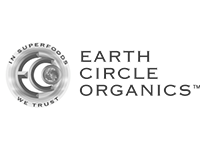Gluten Free
What does following a gluten-free diet mean? That you're embarking on an easy diet with a wide range of health-promoting effects. Instead of dwelling on what you’re giving up, consider that you’re going to enjoy a whole new world of delicious food options to meet your special dietary needs. You’ll be eating seasonally, choosing more fresh fruits and vegetables, focusing on meats, seafood, poultry, legumes, lentils, corn, and rice, and discovering fascinating ancient grains such as quinoa, amaranth, and millet. You’ll be able to eat potatoes, eggs, most cheeses, even chocolate (!)—and enjoy them without guilt because you’ll be taking good care of your body. In fact, you’ll probably end up eating—and feeling—better than ever!
Visit this page for more information about living Gluten Free
---
We carry a large variety of gluten free items, the brands listed below represent just some of the offerings we carry















More Diets
Methoxsalen
Pronounced
"meh-THOX-sal-en"
Common brand names:
Uvadex
Uses
This medication is used to treat cutaneous T-cell lymphoma (CTCL), a type of cancer that affects the skin and blood and sometimes the lymph nodes and other organs. CTCL is caused by the uncontrolled growth of abnormal white blood cells in the skin. This drug is used in a procedure called photopheresis. Some of your blood is removed from your body through a vein and goes into a special machine that separates the white blood cells. The machine adds methoxsalen to these white blood cells, then shines ultraviolet (UV) light on them. Then the machine returns the treated cells (and the rest of your blood) to your body through the same vein. Your immune system is thought to react to the treated cells and other similar untreated T-cells that are not working properly. This effect helps to restore your immune balance and lessens the skin problems (such as rash, plaques, tumors) of CTCL. Methoxsalen is known as a psoralen photosensitizer. It works by making the treated white blood cells more sensitive to UV light.
How to Use This Medication
See Uses section.
This medication is injected into your collected white blood cells during photopheresis by a health care professional. This medication is used as directed by your doctor, usually once a day for 2 days in a row. Photopheresis is usually repeated every 4 weeks depending on your response to treatment.
The dosage is based on your medical condition, the amount of white blood cells collected, and response to treatment.
Copyright © 2025 TraceGains, Inc. All rights reserved.
RxAnswers™ is a copyrighted combined product from TraceGains and First DataBank, Inc.
Drug information is selected from data included with permission and copyrighted by First DataBank, Inc. This is a summary and does not contain all possible information about this product. For complete information about this product or your specific health needs, ask your healthcare professional. Always seek the advice of your healthcare professional if you have any questions about this product or your medical condition. This information is not intended as individual medical advice and does not substitute for the knowledge and judgment of your healthcare professional. This information does not contain any assurances that this product is safe, effective or appropriate for you.
This information is intended only for residents of the United States. Products sold under the same brand names in other countries may contain different ingredients.
Learn more about First DataBank
There are some limitations on the information provided in “Nutrient Interactions.” Do NOT rely solely on the information in this article. Please read the disclaimer.
Learn more about TraceGains, the company.
TraceGains and/or its suppliers make no warranties or representations as to the accuracy or completeness of this content herein or that of any organization referred or linked to within this content and will not be liable for any damages arising out of your access to or use of any information found herein or that of any organization referred to within this content.
Information expires December 2025.











